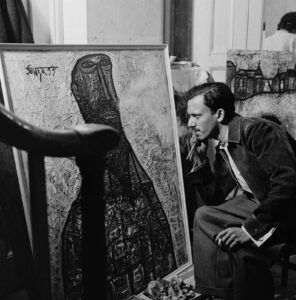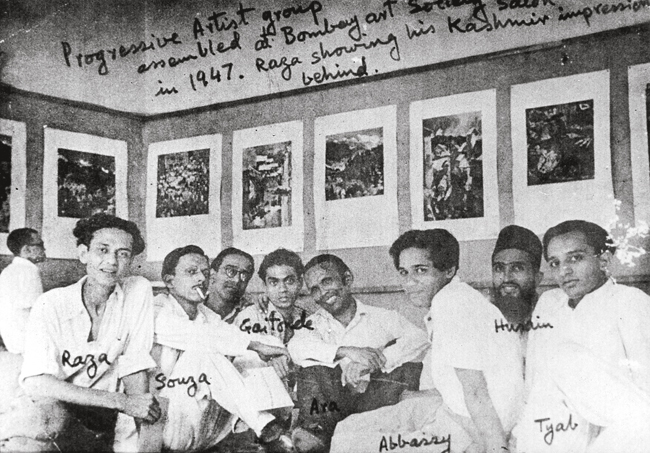At Optima®, our approach to architecture is deeply informed by the ethos of Modernism—its commitment to experimentation, clarity of form, and the seamless integration of art, design, and life. Rooted in the legacy of mid-century innovation, we’re continually inspired by how Modernist principles adapt across cultures and disciplines. One particularly striking expression of this spirit unfolded in post-independence India, where a generation of artists reimagined Modernism to reflect the unique rhythms and aspirations of a newly sovereign nation.
In 1947, as India gained independence, a cohort of bold, visionary artists stepped forward to redefine what Indian art could be. They turned to Modernism not as a Western export, but as a global framework they could shape to reflect their own histories, myths, and modern realities.
Leading this charge was the Progressive Artists’ Group (PAG), formed in Bombay the same year as independence. Founders F.N. Souza, M.F. Husain, S.H. Raza, K.H. Ara, and others set out to dismantle the conservative aesthetics of colonial-era realism and the romantic nationalism of the Bengal School. Instead, they embraced expressive forms, experimentation, and an inclusive visual language that engaged with both local culture and international art movements.

Drawing influence from artists like Cézanne, Picasso, and Modigliani, PAG members crafted a synthesis of East and West. Their subjects ranged from mythology and folklore to the emerging complexities of urban life. Souza’s bold, confrontational figures critiqued religious orthodoxy and societal repression. Husain’s dynamic compositions brought ancient epics into dialogue with contemporary India. Raza, based in Paris, gradually distilled his visual language into symbolic abstraction, often centered on the bindu—a powerful motif from Hindu cosmology symbolizing origin and unity.
Outside the PAG, Modernism continued to flourish in diverse forms. Tyeb Mehta’s stark, gestural figures conveyed emotional intensity and meditations on violence and partition. Nasreen Mohamedi, now recognized as a pioneer of global minimalism, created intricate linear compositions that were at once architectural and deeply personal. Her disciplined abstractions—rooted in Islamic geometry and Indian visual tradition—prefigured global conversations around structure, space, and silence.
Institutions like the Baroda School further expanded the movement’s reach. Artists such as K.G. Subramanyan championed a dialogue between craft and fine art, nurturing a generation of creators who saw no boundary between tradition and experimentation.
Collectively, these artists forged a truly Indian Modernism—at once cosmopolitan and grounded, spiritual and secular, experimental and enduring. Their work spoke not only to the conditions of a newly independent nation but also to broader questions of identity, form, and cultural synthesis.
Today, this legacy is being recognized anew, with major exhibitions and global institutions reevaluating India’s contribution to 20th-century art. At Optima®, we find resonance in their visionary spirit—their ability to honor the past while fearlessly forging a new path. Just as these artists integrated tradition with innovation, we continue to explore how modern design can elevate everyday experience while responding meaningfully to place and culture.

